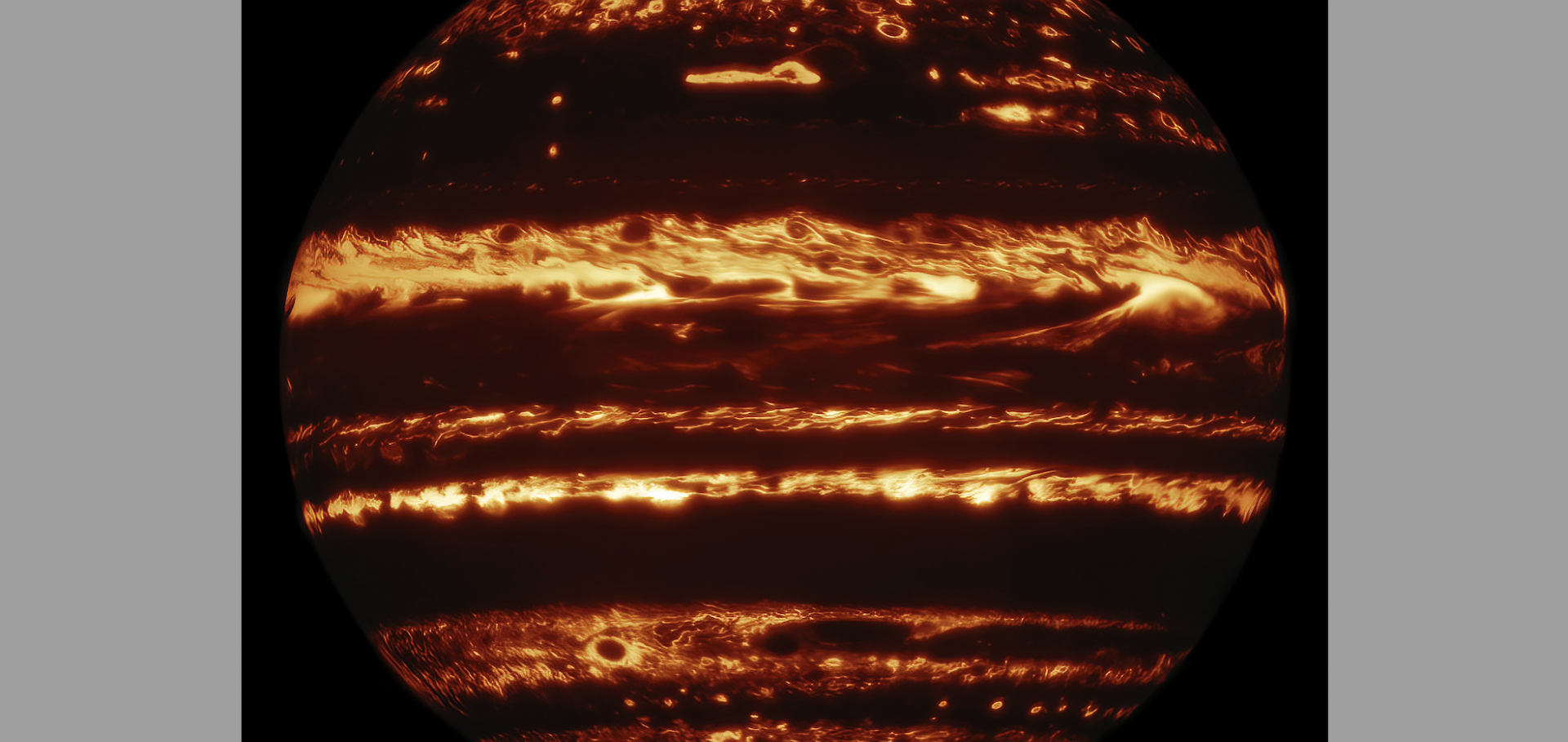Mapping the Pressure-dependent Day-Night Temperature Contrast of a Strongly Irradiated Atmosphere with HST Spectroscopic Phase Curve
Astronomical Journal 163:1 (2022)
Abstract:
Many brown dwarfs are on ultrashort-period and tidally locked orbits around white dwarf hosts. Because of these small orbital separations, the brown dwarfs are irradiated at levels similar to hot Jupiters. Yet, they are easier to observe than hot Jupiters because white dwarfs are fainter than main-sequence stars at near-infrared wavelengths. Irradiated brown dwarfs are, therefore, ideal hot Jupiter analogs for studying the atmospheric response under strong irradiation and fast rotation. We present the 1.1-1.67 μm spectroscopic phase curve of the irradiated brown dwarf (SDSS1411-B) in the SDSS J141126.20 + 200911.1 brown dwarf-white dwarf binary with the near-infrared G141 grism of the Hubble Space Telescope Wide Field Camera 3. SDSS1411-B is a 50M Jup brown dwarf with an irradiation temperature of 1300 K and has an orbital period of 2.02864 hr. Our best-fit model suggests a phase-curve amplitude of 1.4% and places an upper limit of 11 for the phase offset from the secondary eclipse. After fitting the white dwarf spectrum, we extract the phase-resolved brown dwarf emission spectra. We report a highly wavelength-dependent day-night spectral variation, with a water-band flux variation of about 360% 70% and a comparatively small J-band flux variation of 37% 2%. By combining the atmospheric modeling results and the day-night brightness temperature variations, we derive a pressure-dependent temperature contrast. We discuss the difference in the spectral features of SDSS1411-B and hot Jupiter WASP-43b, as well as the lower-than-predicted day-night temperature contrast of J4111-BD. Our study provides the high-precision observational constraints on the atmospheric structures of an irradiated brown dwarf at different orbital phases.Convection modeling of pure-steam atmospheres
Astrophysical Journal Letters American Astronomical Society 923:1 (2021) L15
Abstract:
Condensable species are crucial to shaping planetary climate. A wide range of planetary climate systems involve understanding nondilute condensable substances and their influence on climate dynamics. There has been progress on large-scale dynamical effects and on 1D convection parameterization, but resolved 3D moist convection remains unexplored in nondilute conditions, though it can have a profound impact on temperature/humidity profiles and cloud structure. In this work, we tackle this problem for pure-steam atmospheres using three-dimensional, high-resolution numerical simulations of convection in postrunaway atmospheres. We show that the atmosphere is composed of two characteristic regions, an upper condensing region dominated by gravity waves and a lower noncondensing region characterized by convective overturning cells. Velocities in the condensing region are much smaller than those in the lower, noncondensing region, and the horizontal temperature variation is small. Condensation in the thermal photosphere is largely driven by radiative cooling and tends to be statistically homogeneous. Some condensation also happens deeper, near the boundary of the condensing region, due to triggering by gravity waves and convective penetrations and exhibits random patchiness. This qualitative structure is insensitive to varying model parameters, but quantitative details may differ. Our results confirm theoretical expectations that atmospheres close to the pure-steam limit do not have organized deep convective plumes in the condensing region. The generalized convective parameterization scheme discussed in Ding & Pierrehumbert is appropriate for handling the basic structure of atmospheres near the pure-steam limit but cannot capture gravity waves and their mixing which appear in 3D convection-resolving models.Mapping the pressure-dependent day-night temperature contrast of a strongly irradiated atmosphere with HST spectroscopic phase curve
Astronomical Journal IOP Publishing 163:1 (2021) 8
Abstract:
Many brown dwarfs are on ultrashort-period and tidally locked orbits around white dwarf hosts. Because of these small orbital separations, the brown dwarfs are irradiated at levels similar to hot Jupiters. Yet, they are easier to observe than hot Jupiters because white dwarfs are fainter than main-sequence stars at near-infrared wavelengths. Irradiated brown dwarfs are, therefore, ideal hot Jupiter analogs for studying the atmospheric response under strong irradiation and fast rotation. We present the 1.1–1.67 μm spectroscopic phase curve of the irradiated brown dwarf (SDSS1411-B) in the SDSS J141126.20 + 200911.1 brown dwarf–white dwarf binary with the near-infrared G141 grism of the Hubble Space Telescope Wide Field Camera 3. SDSS1411-B is a 50MJup brown dwarf with an irradiation temperature of 1300 K and has an orbital period of 2.02864 hr. Our best-fit model suggests a phase-curve amplitude of 1.4% and places an upper limit of 11° for the phase offset from the secondary eclipse. After fitting the white dwarf spectrum, we extract the phase-resolved brown dwarf emission spectra. We report a highly wavelength-dependent day–night spectral variation, with a water-band flux variation of about 360% ± 70% and a comparatively small J-band flux variation of 37% ± 2%. By combining the atmospheric modeling results and the day–night brightness temperature variations, we derive a pressure-dependent temperature contrast. We discuss the difference in the spectral features of SDSS1411-B and hot Jupiter WASP-43b, as well as the lower-than-predicted day–night temperature contrast of J4111-BD. Our study provides the high-precision observational constraints on the atmospheric structures of an irradiated brown dwarf at different orbital phases.Modeling Polarization Signals from Cloudy Brown Dwarfs Luhman 16 A and B in Three Dimensions
The Astrophysical Journal American Astronomical Society 923:1 (2021) 113
TOI-2109: An Ultrahot Gas Giant on a 16 hr Orbit
The Astronomical Journal American Astronomical Society 162:6 (2021) 256


